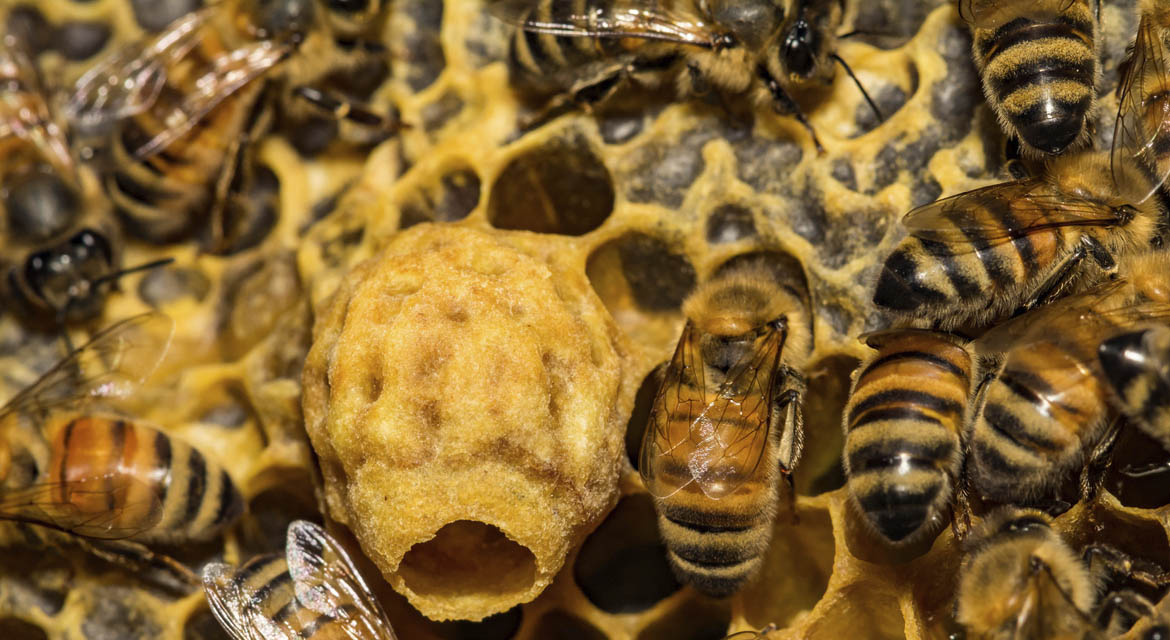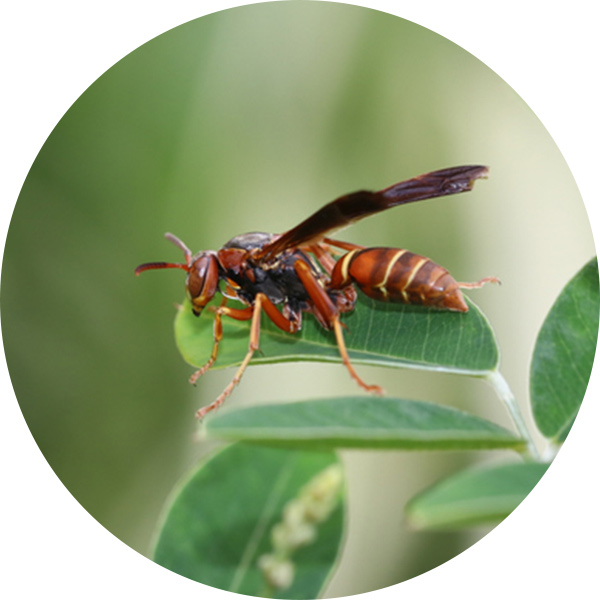
Bee Facts & Information
A bee infestation can pose risks and impacts both to humans and the environment. While bees are important pollinators, their presence in large numbers near human dwellings can increase the likelihood of stings and allergic reactions, as well as potential structural damage if they establish hives in unwanted areas.
Risks of Bees
Sting Risk
Bees are known for their ability to sting when they feel threatened or their hive is disturbed. For individuals who are allergic to bee stings, a single sting can result in a severe allergic reaction called anaphylaxis, which requires immediate medical attention. Even for those without allergies, multiple bee stings can still be painful and cause localized swelling, redness, and itching. People with bee allergies or a history of severe reactions should take extra precautions when dealing with bee infestations and seek professional assistance.
Structural Damage
When bees establish their hives within structures, such as in walls, attics, or chimneys, they can cause structural damage over time. Bees create wax combs, which can accumulate and cause clogging or structural weakening. Their constant activity and construction can also result in the deterioration of building materials and potentially compromise the integrity of the affected area. If left untreated, the long-term presence of bees can lead to costly repairs and renovations.

Disruption of Daily Activities
Bee infestations near human habitation can disrupt normal daily activities and cause inconvenience. The constant presence of bees, their buzzing sounds, and the fear of getting stung can make it difficult to spend time outdoors, especially for individuals with bee phobias or allergies. Bee infestations can also limit the use of certain areas, such as gardens, patios, or outdoor spaces, affecting recreational activities or reducing property value.
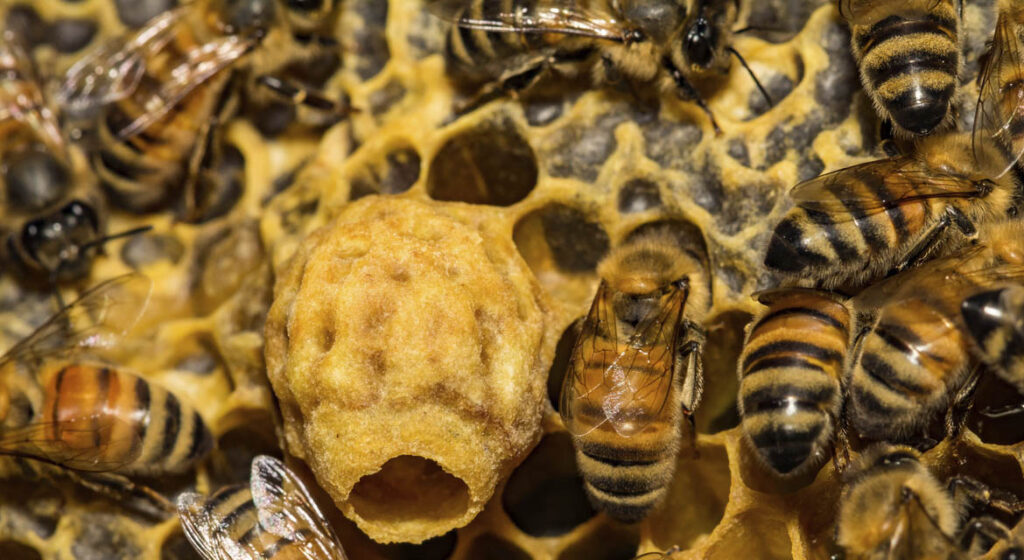
Truly Nolen GUARANTEE
If you’re not completely satisfied, you’ll get a full refund on your most recent service with our 100% money back guarantee.
Common Species of Bees
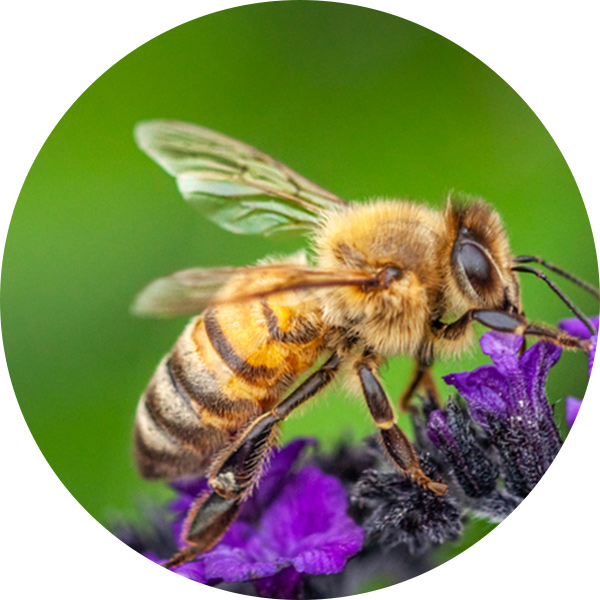
Honey Bees
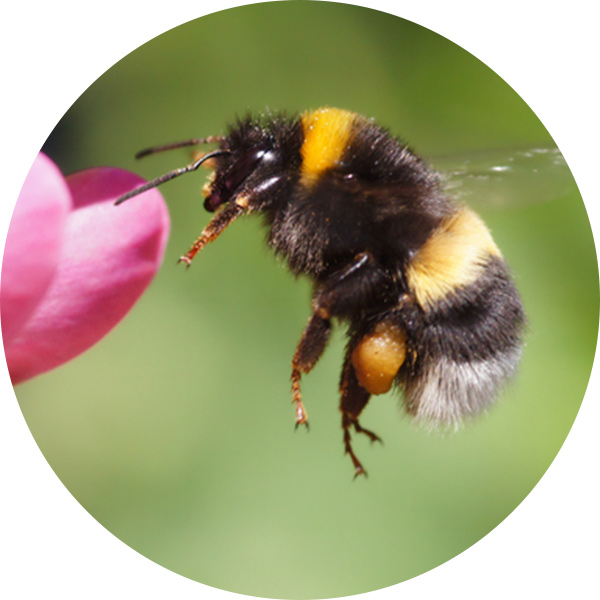
Bumblebees
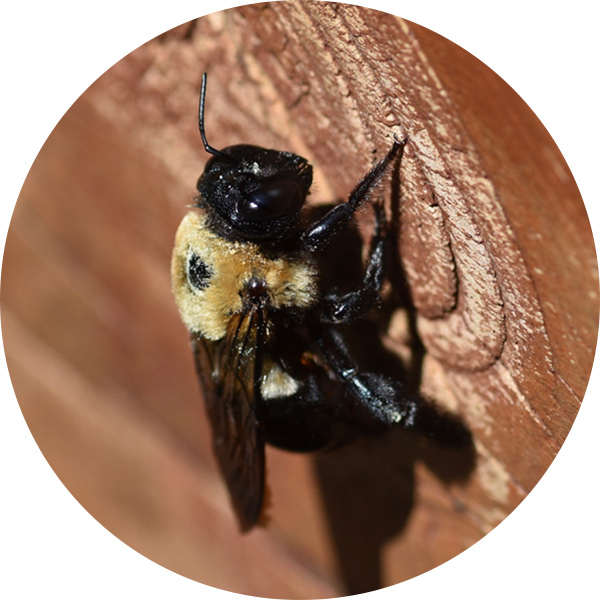
Carpenter Bees
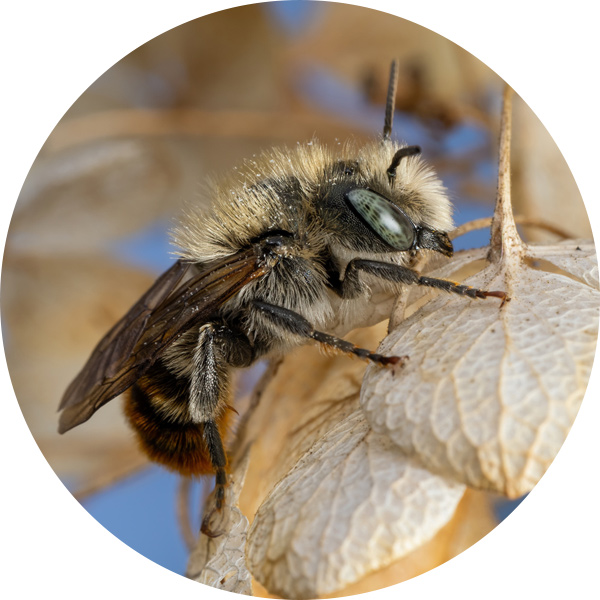
Mason Bees
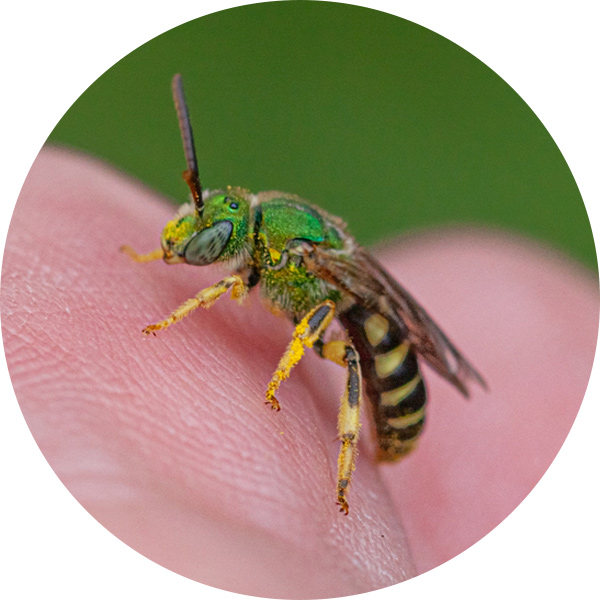
Sweat Bees
How To Identify Bees
Bees are important pollinators and social insects that play a crucial role in plant reproduction and ecosystem health. While they provide numerous benefits, certain species can become a nuisance if they establish colonies in unwanted areas or pose risks to human safety.
Bee Appearance
Bees come in a variety of shapes and sizes, but they generally have a plump, fuzzy body with two pairs of wings and six legs. They are typically black and yellow, or black and orange, but some species may have different coloration or patterns.
Bee Habitat
Bees can be found in almost every part of the world, and they play an important role in pollinating plants and crops. Most species of bees are solitary, and they make their nests in holes in the ground, or in hollow stems or logs. However, some species live in large, complex colonies, such as honeybees and bumblebees.
Bee Diet
Bees feed on nectar and pollen from flowers. Nectar is a sugary liquid that provides the bees with energy, while pollen is a source of protein and other nutrients.
Bee Behavior
Bees are social insects that live in colonies. Each colony has a queen bee, who is responsible for laying eggs, and a number of worker bees, who gather food and care for the young. Bees are known for their ability to communicate with each other through a series of dances and chemical signals.
Bee Reproduction
Queen bees lay eggs, which hatch into larvae. The larvae are fed by the worker bees and develop into pupae, before emerging as adult bees. In some species, the queen can control the sex of the eggs she lays, while in others, it is determined by the type of food the larvae are fed.
Bee Prevention
If you have a problem with bees on your property, it is best to contact a professional beekeeper or pest control company, rather than attempting to remove them yourself. In some cases, bees can be relocated to a more suitable location, rather than being exterminated. To prevent attracting bees to your property, avoid leaving sugary drinks or food outside, and seal up any openings in your home or building where bees might be able to enter.

$50 Off Year Round Pest Control
Truly Nolen is a family-owned company with 85 years of experience providing the best pest control. If you’re not completely satisfied, you’ll get a full refund on your most recent service with our 100% money back guarantee.
The Truly Nolen Approach
Environmentally Conscious
We work to minimize our impact on the environment by using naturally occurring materials whenever possible.
Pet Friendly
Truly Nolen uses an Integrated Pest Management (IPM) approach designed with your pets in mind.
100% Money Back Guarantee
If you’re not completely satisfied, you’ll receive a full refund on your most recent service.
How Truly Nolen Gets Rid of Bees
Truly Nolen follows a responsible and ethical approach when it comes to dealing with bees. Instead of extermination, they focus on bee removal and relocation, aiming to preserve and protect these beneficial insects. Their trained professionals employ specialized techniques to safely remove beehives and relocate them to appropriate locations, ensuring the well-being of both the bees and the affected property. This approach promotes the conservation of bees while addressing any potential risks they may pose.
Frequently Asked Questions
Are bees dangerous?
Bees are generally not aggressive and will only sting if they feel threatened or their hive is disturbed. However, some people may have allergies to bee stings, which can cause severe reactions. It’s important to exercise caution and seek professional help when dealing with bee infestations.
How do I know if I have a bee infestation?
Look for signs such as a high number of bees frequently entering and exiting a specific area, the presence of a visible hive or nest, or an increase in bee activity near your property. Bee buzzing sounds and honeycomb structures may also indicate an infestation.
Can I remove a bee hive on my own?
Removing a bee hive can be dangerous and is best left to trained professionals. Attempting to remove a hive without proper knowledge and equipment can lead to bee stings and potential property damage. It’s advisable to contact a reputable bee removal service for assistance. Learn More!
What should I do if I encounter a swarm of bees?
If you come across a swarm of bees, it’s important to remain calm and avoid swatting or provoking them. Keep a safe distance and contact a professional bee removal service who can safely relocate the swarm.
Can carpenter bees damage my property?
Yes, carpenter bees have the potential to cause damage to property. While they do not consume wood like termites or carpenter ants, female carpenter bees excavate tunnels in wood to create nests and lay eggs. Over time, repeated nesting activity can weaken and compromise the structural integrity of wooden structures such as decks, fences, eaves, and other wooden components of buildings. Additionally, the entry holes created by carpenter bees may invite other pests or lead to water damage if left untreated. Prompt identification and appropriate measures to control and repair carpenter bee damage are recommended to protect the property.

